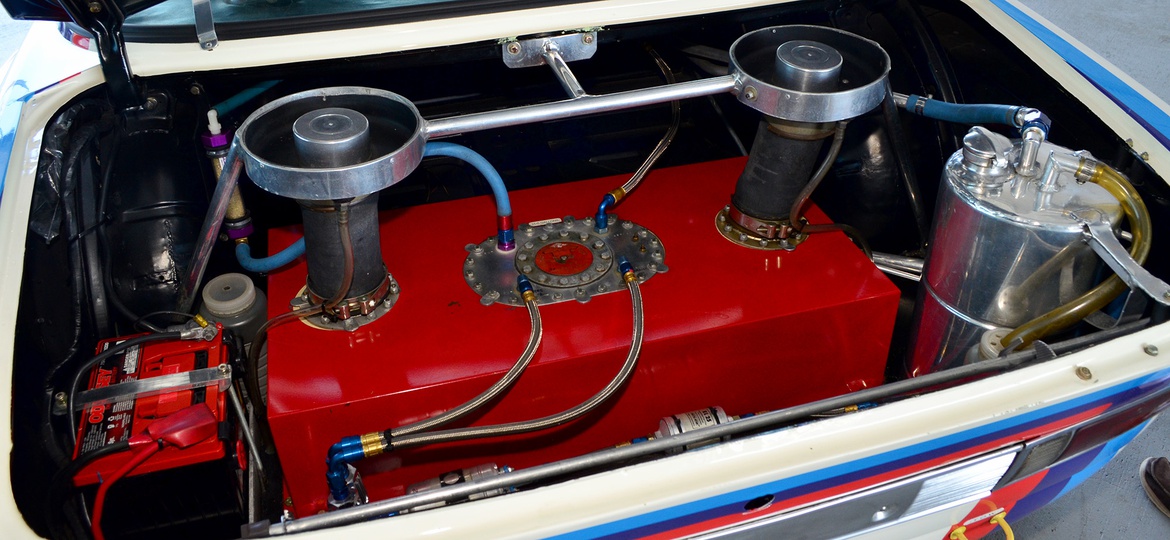
Fuels can vary by so many different properties. The biggies are octane, oxygen, lead content, and something called specific gravity, which measures the ratio of a substance’s density against a standard. When that substance is a liquid, that standard is water. Gasoline weighs less than water, and most blends have a specific gravity somewhere between 0.7 and 0.8. You might …
Read the rest of the story
Hope you're enjoying all of this fuel tech talk. Also, this kept going through my head while writing this one:

te72
Reader
4/29/19 8:26 p.m.
Always good to learn something new about this hobby!
So, question then. If a lighter fuel burns quicker, does it run a higher risk of detonation? I know with higher octane that might be found it's probably less of a concern, but it makes me wonder. I'd think if it lights off quicker, it's likely to burn more completely and produce more power, all other variables being equal.
isooctane has a density of 0.692 g/ml, flash point of 10 °F and has an octane number of 100.
Plain octane (C8H18) has a density of 0.703 g/ml, flash point of 55.4 °F and has an octane number of -17.
A fuel's density does not directly relate to it's octane, but you might see some correlation between different grades of fuel from a single brand. Pure H2 has an octane number over 130, but it's energy density is low on either a weight or volume basis. Gasoline has about double the combustion energy of methanol, so the fuel consumption is higher if you are adding methanol to increase octane. It used to be that summer gasoline got slightly better mileage. I have not personally tested since most retail stations were allowed up to 10% ethanol (higher energy content than methanol but much lower than gasoline).

te72
Reader
4/30/19 9:43 p.m.
Interesting info, if I had to guess, I'd say you're in the chemical engineer side of the spectrum?
Perhaps I should simplify my question. Would a fuel that lights off quicker burn more thoroughly?

15f80
New Reader
5/1/19 12:06 a.m.
It's complicated. How do you define "lights off quicker?" Is it something that: evaporates easily (low heat of evaporation), has a low flash point (higher proportion of light components that boil at low temperatures), or that requires a lower voltage spark to start ignition and/or has a low autoignition temp? Same thing with "burn more thoroughly," is it: low HC/particulate emissions, or reduced carbon deposits on your pistons and valves?
Ethanol is added to gasoline as an attempt to reduce tailpipe emissions of HC, CO, and will usually raise the octane number. It has been linked to an increase ground level ozone, and an increase of particulates, NOx, NH3, and VOCs around ethanol production facilities. Experience is eleven years in a refinery and typical chemistry classes for BS engineering.

te72
Reader
5/1/19 9:13 p.m.
I see what you mean, to an extent. No easy answer, it would seem, given the potential variables and goals involved. It was mostly a curious question anyway, I run my fun cars on pump gas since it's easily found, well, just about everywhere. Sure I'm potentially leaving some performance on the table, but it has enough to spare in the power department so I'm not too worried about it.
Sounds like you have a much more entertaining job than I do, I'm basically an accountant who is really good at Tetris, hence, I work in a shipping department.
I too run on pump gas since I’m budget limited. I prefer E85 since it’s both cheaper and produces more power.
However pump grade E 85 is extremely variable. How much ethanol and what is the base fuel? Ethanol is the good stuff. 114 octane and Both NASCAR AND INDY car use it. But 15-40% of the fuel could be base stock 87 octane gasoline. Or worse!
Some refineries change blends from tank to tank which doesn’t bother anything if you have either a flex fuel sensor or your car is programed to read and adjust on the fly.
If on the other hand you are running carbs you have set your timing more conservative and effectively leave some power on the table.
forgive my ignorance but what are those 2 tower things and the expansion tank as part of the fuel cell system in the trunk in the photo here for?
In reply to fidelity101 : I believe those “ Towers” are quick fill stations either for the left side or the right side. Or perhaps one is a fill and the other for vapor and to catch overflow.
The expansion tank is designed to cool and return bypassed fuel into the tank.




























